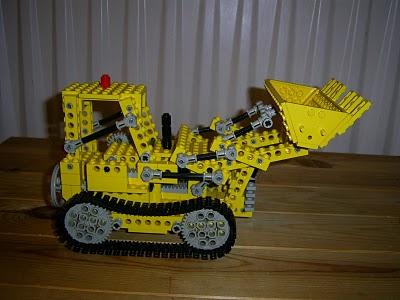Its gonna be one of these
Lego Species

Maybe a D6 then. Better for working on steep slopes. .. like the sides of trees etc.
That's pretty impressive though.
Its gonna be one of these
Lego Species

Talking about hijacking the thread, any body to include a Komatsu?
Nah, not a Komatsu, defo a Caterpillar.. Think its one of those flex drive drone prototypes.. The chassis flexes, and each wheel station drives.. They work better in a convoy tho.. The first prototypes have had issues with drivers and capacity!!!
1995 Mercedes 1222A 4x4
1969 (Now know! Thanks Diana!!) Ser 2 Tdi SWB
1991 VW Citi Golf Cti (soon to be Tdi)
'When there's smoke, there's plenty of poke!!'
'The more the smoke, the more the poke!!'
Possibly this, Bob
Chelepteryx collesi Gray, [1835]
White Stemmed Gum Moth
(erroneously: Saturnia collesii)
ANTHELINAE , ANTHELIDAE
Don Herbison-Evans
( donherbisonevans@outlook.com)
and
Alan Tickner & Stella Crossley
(Photo: courtesy of the Macleay Museum, University of Sydney)
This Caterpillar is a great hazard to people climbing Gum trees. Scattered over its skin are tufts of long stiff reddish hairs, which are strong enough to penetrate human skin. When they do, they are very painful, and difficult to remove because they are barbed and brittle. if one should lodge in the eye, it can cause serious sight problems.
(Photo: courtesy of Ian McMillan, Imbil, Queensland)
The Caterpillar is grey and black, with four of large pale yellow spots on each segment (two on the back, and one each side), each with a tuft of these dangerous hairs.
(Photo: courtesy of Margaret Humphrey)
It feeds on the leaves of various trees in the family MYRTACEAE, such as :
[ame="http://en.wikipedia.org/wiki/Lophostemon_confertus"]Lophostemon confertus - Wikipedia, the free encyclopedia[/ame] ( Lophostemon confertus ),
Blake Paperbark ( Melaleuca quinquenervia ), and
various [ame="http://en.wikipedia.org/wiki/Eucalyptus"]Eucalyptus - Wikipedia, the free encyclopedia[/ame] ( Angophora and Eucalyptus species ).
(Photo: courtesy of Ralph Willis)
It is also one of the largest Caterpillars in Australia, growing in length to about 12 cms. Some trees where they may be found most years in Leichhardt are known by local school-children as 'sausage trees' because the Caterpillars look from the ground like sausages growing in the trees.
cocoon
(Specimen: courtesy of the Macleay Museum, University of Sydney)
When mature, the Caterpillars often pupate on the trunk of the food tree, or else sometimes go walkabout to seek a nice crevice in a wall or some such place. They are so big that they are quite noticeable when they cross roads and paths. They pupate in a leathery double walled cocoon, which is covered by the same hazardous stiff hairs. The Caterpillar pushes these through the silk as the cocoon is constructed. The cocoons are usually well camouflaged, and may be up to 12 cms. long. They are a great hazard to children and others who climb gum trees.
cocoon cut open to show pupa
(Photo: courtesy of the Macleay Museum, University of Sydney)
The moths usually emerge in autumn (April, May), although we have had specimens stay as pupae for over 12 months. The moths large and brown, with wavy bands of yellow and grey.
male
(Photo: courtesy of Miriam and Eric Heatwole, Murrumbateman, NSW)
The males have a wingspan of about 14 cms. The males will often come to lights at night, but the females seldom do.
female
(Photo: courtesy of Ronda Warhurst, Warwick, Queensland)
The male moth has a special defence posture when threatened: rearing up, extending its dark fore legs, and exposing the light underside of the wings. In this posture, it resembles a large spider about to strike.
underside
(Photo: courtesy of Laura Levens, Victoria)
The females are larger, reaching a wingspan of 16 cms. The moths are often mistaken for bats.
egg mass
The eggs are brown, oval, and rough, each with a length of about 2mm. They are laid in untidy masses of 20 or so, on any arbitrary surface.
mating couple
(Photo: courtesy of Andreas Betzner, Canberra) The species is found over much of south-eastern Australia, including:
Queensland,
New South Wales,
Australian Capital Territory, and
Victoria.

I’m pretty sure the dinosaurs died out when they stopped gathering food and started having meetings to discuss gathering food
A bookshop is one of the only pieces of evidence we have that people are still thinking
| Search AULRO.com ONLY! |
Search All the Web! |
|---|
|
|
|
Bookmarks